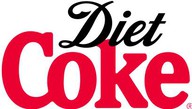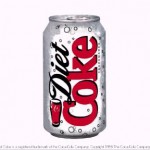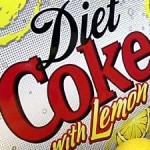Rebuilding Of The Diet Coke Franchise

Core Skills:
- Translating Consumer Insights into Successful Consumer Strategies
- Building Engagement through Emotion, Brand and Technology
Problem
Diet Coke had an identity crisis and consumers, both young and old, didn’t have a clear perception of the brand’s value. The franchise needed to become relevant to a younger audience while promoting the passion of the current core user. With key brand health measures declining and increased competition from bottled water, Diet Coke needed to redefine and recalibrate its role in a consumer’s beverage set.
The Opportunity
The opportunity was to reinforce (for current users) and establish (for non users) Diet Coke as the preferred light beverage of choice. To do this I needed to redefine what Diet Coke stood for (functionally and emotionally) so that the brand was uniquely relevant and motivating to people irrespective of their age. This re-definition would then provide a platform for Diet Coke leadership in the light beverage category and a re-energized (operating) system to champion the brand franchise in 2000 and beyond.
Actions
Step One: Deep Dive Analytics of Business Performance and Consumer Behavior
Led a comprehensive business analysis that provided key insights into consumer behavior, brand health, operational marketing support, business opportunities and competitive threats.
Step Two: Launch Vision Research to Re-define Brand Platform of the Future
Launched a $650K vision research project designed to define a long-term, compelling, fully dimensionalized brand platform that would contemporize Diet Coke while broadening its appeal to a new generation of users.
Step 3: Produce and Execute a Synchronized Business Plan
With 3 distinct users identified (Core Diet Coke drinkers, New Diet Coke drinkers and Variety-Seeking Diet Coke drinkers) and a new communication strategy built on human-centric research, I presented a comprehensive operating plan to senior management that included a new target audience, an updated brand character, a revitalized creative direction and tagline (“Live it Up. Drink it Down.”), updated Holiday packaging graphics and the launch of Diet Coke with Lemon.

Business Results
The actions taken resulted in a step-change in volume performance, shifting from a decline in 1999 to future sustained growth. The Diet Coke franchise moved from focusing on maintenance to active recruitment and growth in daily user frequency and loyalty. Diet Coke ended 2000 with a +2.6 share point gap to Diet Pepsi and a sales increase of +3% on a base of $1.6 billion.
The Diet Coke print creative (“Bubble Wand” produced by Weiden & Kennedy) launched in September 2000 (within 7 magazines) and immediately won top honors in the Starch Ballot Readership Report as the Sports Illustrated “most noted” and “most read.” The same ad won a similar award for its placement in the April 2001 publication of Biography magazine.
Launching Diet Coke With Lemon

Problem
I was the senior brand manager of the Diet Coke franchise in 1999, a $1.6 billion franchise for The Coca-Cola Company. It was a pivotal time for the brand. Sales growth for the franchise was slowing down and projected to decline without a significant marketing initiative. The Diet Coke franchise was aging. Core users were substituting other beverages to satisfy their calorie and taste needs. And, brand health measures were declining. What were the key business issues behind these results and what consumer motivations were driving these behaviors?
Actions
My first step was to lead a cross-functional team in a structured fact-based analysis utilizing all of the primary and secondary research we had available. The analysis found that the consumer and competitive landscape had changed and that the Diet Coke franchise no longer satisfied all the needs of our current and future consumer base. For example, it showed that young adults found the artificial sweetener to be the taste barrier to entering the franchise and that core users were beginning to reach for flavored non-carbonated beverages as late day alternatives. In addition, competition had increased and even bottle water was now commanding taste attributes in the minds’ of Diet Coke consumers. All of this information led to the following hypothesis: launch a flavored Diet Coke product to fulfill our consumers needs and re-establish the franchise as the leader in low-calorie, full taste refreshment. A flavored Diet Coke product would drive incremental sales, help mask the artificial sweetener and thus recruit the next generation of users, increase frequency among core users and reconnect consumers to the core equities of the brand.
My next step was to design the consumer, product, volumetric and brand analyzes with my research team to test the hypothesis. I also interviewed numerous internal managers and industry experts regarding the hypothesis and line extensions in general. This was to be the first line extension off of a Coca-Cola trademark since Diet Coke in 1983 and I did not take that assignment lightly.
Results
The data came back and I analyzed it with my team. Lemon was the preferred flavor. The extension drove incremental volume into the brand and Company portfolio, it brought younger users into the franchise and its presence added to the core brand equities. My final recommendation was to launch Diet Coke with Lemon nationally. The result was that Diet Coke with Lemon became the #1 incremental volume driver for Coca-Cola North America in 2001.
Back to Marketing Portfolio Page
Connect with Me